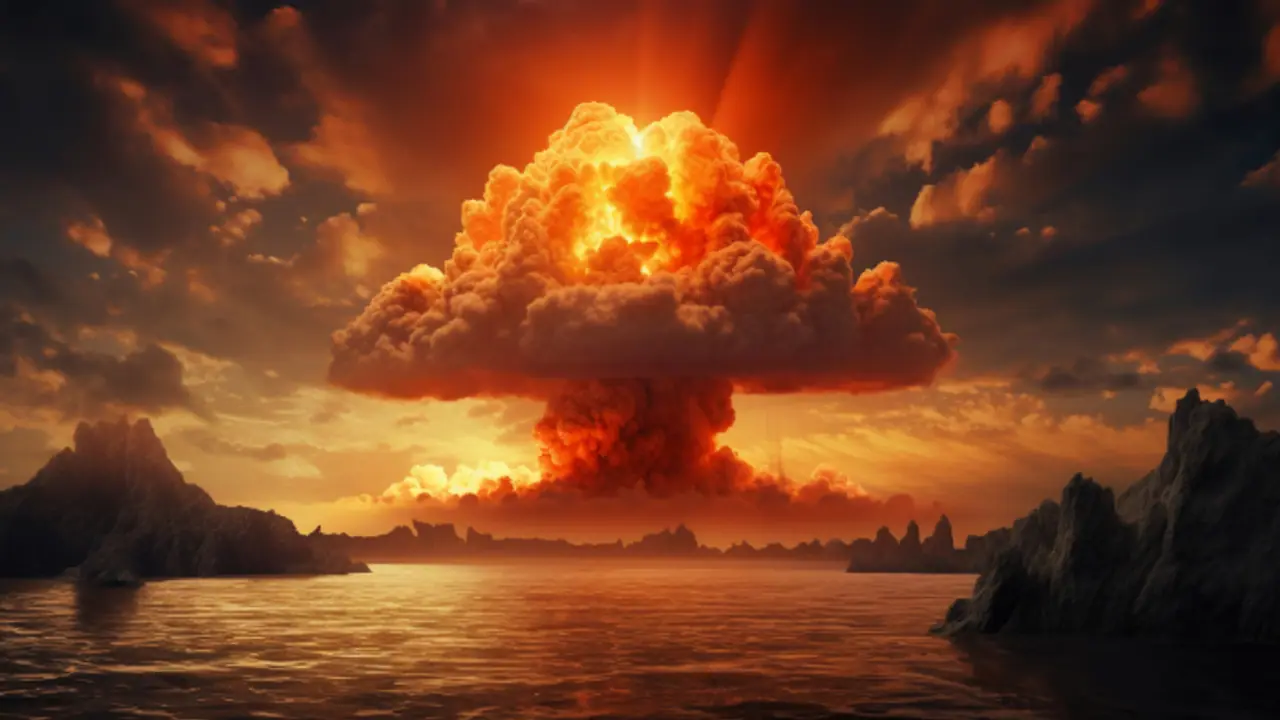According to the SIPRI assessment on global weapons, disarmament and security, the United States has the most nuclear weapons, followed by Russia. The United Kingdom, France, China, India, Pakistan, North Korea and Israel also have significant nuclear capabilities.
There are around 12,121 nuclear weapons globally, with 9,585 of them ready to be used by the military. About 2,100 of these warheads are on ballistic missiles and are kept ready to launch quickly, mainly by the US and Russia. And now, China has joined this group. The Stockholm International Peace Research Institute (SIPRI) Annual Report, 2024, states that India now has a larger nuclear weapons stockpile than Pakistan.

According to the SIPRI assessment on global weapons, disarmament and security, the United States has the most nuclear weapons, followed by Russia. The United Kingdom, France, China, India, Pakistan, North Korea and Israel also have significant nuclear capabilities.
India and Pakistan are both working to upgrade their nuclear weapons. While India’s nuclear strategy has traditionally focused on Pakistan, it is now also improving its long-range capabilities to reach targets in China. The report discusses how these changes affect regional and global security, showing the evolving dynamics and strategic issues related to nuclear deterrence. The report gives a detailed look at how nuclear arsenals are being updated and expanded, emphasising the importance of these changes for global stability and security.
These evaluations are primarily based on satellite images of plutonium production plants and uranium enrichment facilities. Even though the history of these facilities provides valuable insights, the exact methods and measurements used by SIPRI and the International Panel on Fissile Materials (IPFM) are not well-known, which makes the accuracy of these estimates uncertain.
Western assessments of South Asia’s N-capabilities are politically guided. India’s long-standing nuclear programme and its geopolitical position support this view. India’s first N-test in 1974 marked its foray into the select band of nuclear-armed states. Over the years, India has developed a comprehensive nuclear triad, ensuring land, sea and air-based delivery systems for its nuclear arsenal. This strategic capability puts India ahead of Pakistan as far as nuclear deterrence is concerned, as the latter’s nuclear programme is more recent.
India has a powerful nuclear arsenal, with the ability to launch nuclear weapons from the air, land and sea. The country also has one of the world’s largest supplies of its own uranium. In 2008, India received a waiver from the Nuclear Suppliers Group (NSG), allowing it to import large amounts of nuclear fuel. This helps India conserve its own uranium, which could be used for developing weapons.
According to The Diplomat, Pakistan’s military strategy is not built around a ‘no-first-use’ policy in the case of N-weapons. Instead, Pakistan reserves the right to carry out first nuclear strikes, especially because it feels there is an imbalance with India’s conventional and nuclear forces. According to the SIPRI analysis, Pakistan focuses on using small nuclear weapons to counter India’s ‘Cold Start’ strategy, which involves quickly mobilizing military forces. This approach highlights Pakistan’s stance.
The Diplomat reports that a separate analysis by the International Campaign to Abolish Nuclear Weapons (ICAN) estimates Pakistan spent $1 billion on its nuclear programme in 2023, which amounts to $1,924 per minute.
As of January 2024, SIPRI estimates that India has a stockpile of 172 nuclear warheads, which is a slight increase from that in the previous year. India’s expanding nuclear capabilities include these warheads, along with aircraft, land-based missiles and nuclear-powered submarines that can launch ballistic missiles. In the past, India has kept its nuclear weapons and their launchers separate in peacetime. However, recent changes suggest that India is now starting to pair some warheads with their launchers even during these times.
India is making its nuclear forces more prepared and might be shifting toward a strategy aimed at targeting an enemy’s nuclear weapons before they can be used. According to ICAN research, India’s nuclear programme is projected to cost $2.7 billion in 2023. Initially, India focused on Pakistan with its short-range nuclear weapons. But now, with the development of longer-range missiles, China has also become a key target.
India’s ‘no-first-use’ policy, established in 1999, is still in place. However, in 2003, it was updated to allow for the use of nuclear weapons in response to non-nuclear attacks.
The research points out that nuclear-armed countries are continuing to upgrade their capabilities. This includes developing new technologies, such as multiple independently targetable re-entry vehicles (MIRVs) and improving their existing arsenals. North Korea, Pakistan and India are striving to achieve this capability, which could lead to an increase in the number of deployable warheads and potentially cause greater destruction during conflicts.
The report also notes that India is focusing on developing longer-range weapons that can hit targets anywhere in China and Pakistan, indicating a boost in its deterrent capability. The modernization of India’s military could affect the balance of power in South Asia and add to the complex security situation in the region. Pakistan, on its part, is bent on enhancing its own armed forces to match India’s growing military might, even as the country is plunged in a quagmire of economic instability. This could, possibly, lead to a fierce arms race in South Asia.
(The author of this article is a Defence, Aerospace & Political Analyst based in Bengaluru. He is also Director of ADD Engineering Components, India, Pvt. Ltd, a subsidiary of ADD Engineering GmbH, Germany. You can reach him at: girishlinganna@gmail.com)
